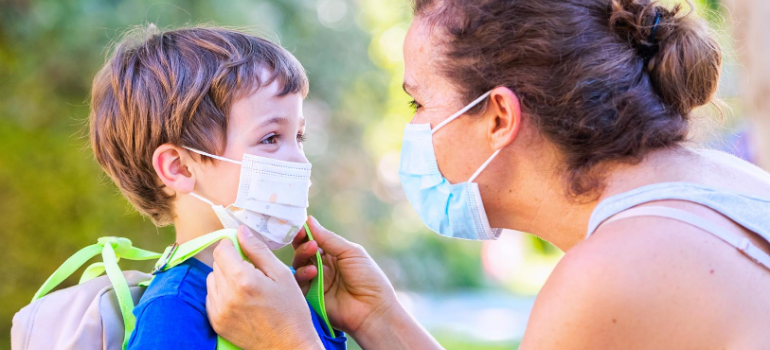Pediatrics
Want to learn more about this at Kettering Health?
With many Ohio schools aiming for a September 8 return to classes, parents are deciding whether to send their kids back to school for in-person instruction.
Back to the classroom
There are a few key factors to consider before sending your child back to school, according to Dr. Jeffrey Weinstein, infectious disease specialist with Kettering Health.
“If your child has a chronic illness, a respiratory condition such as asthma, or a weakened immune system, think about keeping them home,” Dr. Weinstein says. “For parents of children who are generally healthy, there would be less of a concern about allowing them to have in-person instruction.”
Parents sending their kids to school should also be prepared to distance them from high-risk family members they may typically visit, such as older grandparents. If other members of the household are at-risk, parents should strongly consider keeping the child at home.
“Because they can get infected and transmit the virus, the concern is that children could spread the disease to teachers, staff, and family members,” Dr. Weinstein says.
Talk about safety
The number one thing to stress to your children about returning to school is the importance of masks. While masks are enforced inside school walls, make sure your child knows to keep it on during less-supervised activities, such as on the bus, while walking home with other kids, or for carpools.
“If you explain to a child that wearing a mask is protecting the people around you, they [will] want to help people,” Dr. Weinstein says. “It’s a strong message for parents to tell their children.”
Speak with the school
Knowing the precautions your child’s school is taking can help put your mind at ease about their safety—or inform your decision on whether to send them back.
Ask about the classroom set up: how many kids will be there, how far apart they will be, and if there are any plans to shield the kids from staff and each other, such as a plexiglass divider. Outside of the classroom, how will students keep their distance in the hallways and lunchroom?
Online-only
Whether you choose to keep your student home, or schools begin to do remote learning at some point this year, changes to a normal routine can cause stress for both you and your child. You may even find yourself juggling your parental duties with being a full-time tutor and trying to complete your work from home.
So, how do you handle it all? According to Jaclyn Scanlan, therapist with Kettering Health Network, routine is essential.
Set your kids up for success
“Ensure they’re staying on the same routine and schedule as if they were in school,” Jaclyn says. “Treat this as school, not as being home and doing some stuff for school.”
Make sure you have a dedicated space in the home for school to help reinforce the separation between free time and focus time.
Keep in mind that even if some kids are excited to be home, the big change can still be a stressor. “Validate their feelings,” Jaclyn says. “If they hate this or are just having a rough day, let them vent and praise them for talking about it.”
Take time for you
You may be wondering how you’re supposed to find time to relax. One key tip is planning as much as possible. “Pack lunches the night before, so the next day, you’re not worried about throwing a lunch together,” Jaclyn says.
If your child’s online learning is teacher-directed, encourage them to reach out to their teacher with any questions, as their first instinct may be to ask you.
And when the school day ends, go out somewhere alone to get some you-time. Whether your partner can spend time with the kids, or they can have a socially distant play date outdoors with neighbors, the kids can have some interaction, and you can have some time for yourself.










